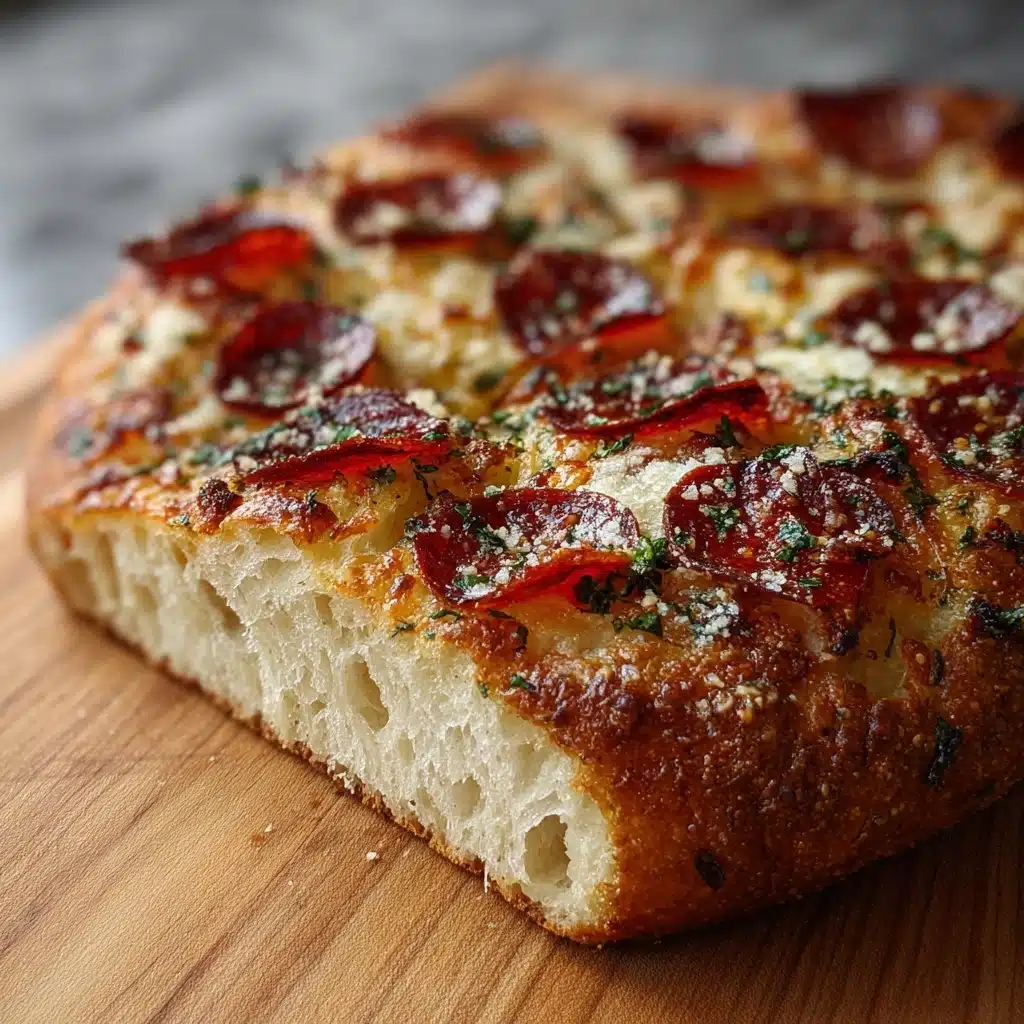sourdough pizza dough Recipe
If you’ve ever dreamed of crafting the perfect pizza crust that’s crispy on the outside, chewy on the inside, and bursting with that unique tangy flavor, then sourdough pizza dough is your new best friend. This dough harnesses the natural fermentation of sourdough starter to deliver depth and complexity that commercial yeast just can’t match. The journey from simple ingredients to a mouthwatering crust is truly magical, and once you try making your own sourdough pizza dough, I promise it will become a staple in your kitchen.

Ingredients You’ll Need
The magic of sourdough pizza dough lies in its simplicity. Each ingredient plays a pivotal role in crafting a dough that is flavorful, airy, and tender. From the flour’s structure to the hydrating power of water and the soulful punch of sourdough starter, these essentials come together beautifully.
- All-purpose flour: The backbone of your dough, providing structure and the right protein balance for elasticity.
- Water (room temperature): Hydrates the flour, activates the starter, and influences dough texture.
- Active sourdough starter: Your natural leavening agent that imparts that characteristic tang and rise.
- Salt: Enhances flavor and controls fermentation to give your dough balance.
- Olive oil (optional): Used for greasing, it ensures your dough doesn’t stick and adds a subtle richness.
How to Make sourdough pizza dough
Step 1: Mixing the Flour and Water
Start by combining the flour and water in a large mixing bowl. Stir just until no dry flour remains; this is your autolyse phase, where the flour hydrates and gluten starts to form. Letting it rest for about 30 minutes helps develop the dough’s texture naturally without any kneading yet.
Step 2: Adding Starter and Salt
Next, incorporate your active sourdough starter and salt into the hydrated flour mixture. Use your hands to gently fold and knead the ingredients together until everything is well blended. This step wakes up the yeast and bacteria in the starter, beginning the fermentation process.
Step 3: Kneading the Dough
Transfer the dough onto a lightly floured surface and knead it for 5 to 7 minutes. You’re looking for a smooth, elastic ball—this kneading develops the gluten network that gives your crust its perfect chew and strength.
Step 4: First Fermentation
Place your dough ball in a lightly oiled bowl, cover it with plastic wrap or a kitchen towel, and leave it to ferment at room temperature for 8 to 12 hours. This slow fermentation is where the magic of sourdough pizza dough really happens, allowing the flavors to deepen and the dough to rise beautifully.
Step 5: Dividing and Shaping
After fermentation, turn the dough onto a floured surface and gently deflate it. Divide it into four equal portions if you want medium-sized pizzas. Shape each piece into tight balls by folding edges into the center and rolling them on the counter. This helps build surface tension for a nice rise later.
Step 6: Second Rise
Place your dough balls on a floured surface or pizza peel, cover them with a towel, and let them rest for 30 minutes to 1 hour. This short, second rise relaxes the dough, making it easier to stretch.
Step 7: Preheating and Baking
Preheat your oven to its highest setting, around 475°F to 500°F, for at least 30 minutes with a baking stone or baking sheet inside to retain heat. Stretch or roll out each dough ball to your desired size and thickness, transfer carefully onto your preheated stone, add your favorite toppings, and bake for 10 to 15 minutes until the crust turns golden and crispy.
How to Serve sourdough pizza dough

Garnishes
Once your sourdough pizza is out of the oven, think beyond the usual cheese and tomato sauce. Fresh basil leaves, a drizzle of extra virgin olive oil, crushed red pepper flakes, and a sprinkle of flaky sea salt can elevate each bite. These simple garnishes brighten the flavors and add that professional touch every pizza deserves.
Side Dishes
No pizza experience is complete without delicious sides. Pair your sourdough pizza with a tangy arugula salad dressed with lemon and Parmesan or roasted garlic and herb-infused vegetables. These sides complement the rustic flavors of the crust and add a fresh contrast to your meal.
Creative Ways to Present
For a fun twist, consider making smaller, individual pizzas that guests can customize, or shape the dough into a stuffed crust filled with cheese or herbs. Another idea is to serve your sourdough pizza dough as a base for flatbread appetizers topped with hummus, olives, and roasted peppers. The versatility of this dough opens up a world of delicious possibilities.
Make Ahead and Storage
Storing Leftovers
If you have leftover pizza, wrap slices tightly in plastic wrap or foil and refrigerate. This helps keep the crust moist and prevents it from drying out, so your next meal is just as enjoyable as the first.
Freezing
You can freeze extra portions of the sourdough pizza dough before baking. Simply shape the dough into balls, wrap each tightly in plastic wrap, place them in a freezer-safe bag, and freeze for up to 3 months. Thaw in the refrigerator overnight before use for best results.
Reheating
To reheat leftover pizza, avoid the microwave if possible as it can make the crust soggy. Instead, warm slices in a hot oven or on a skillet to revive that crispiness and flavor.
FAQs
What makes sourdough pizza dough different from regular pizza dough?
Sourdough pizza dough uses natural fermentation from a sourdough starter instead of commercial yeast. This gives the crust a unique tangy flavor, better texture, and often improved digestibility.
How long does it take to make sourdough pizza dough?
The entire process including fermentation usually takes about 8 to 12 hours, mostly unattended time. Active hands-on time is roughly 20 to 30 minutes.
Can I use whole wheat flour in sourdough pizza dough?
Absolutely! Whole wheat adds nutty flavor and extra nutrients, though it may require slightly more hydration, so you might need to adjust the water amount.
How do I know if my sourdough starter is active?
An active starter should double in size within 4 to 6 hours of feeding and be bubbly with a pleasant tangy aroma, indicating it has enough yeast and bacteria to leaven your dough.
What if my sourdough pizza dough feels too sticky?
Sticky dough is normal with higher hydration doughs; lightly flour your hands and surface while handling. If it’s excessively sticky, you can gradually add a bit more flour during kneading but be careful not to dry it out.
Final Thoughts
Making your own sourdough pizza dough is a deeply rewarding experience that transforms everyday pizza into a culinary delight. The dance of flavors from natural fermentation, combined with that perfect crust texture, is truly something special. So roll up your sleeves, gather your ingredients, and dive into making sourdough pizza dough—you’ll wonder how you ever lived without it!
Print
sourdough pizza dough Recipe
- Total Time: 9-13 hours (including fermentation and rising)
- Yield: 4 medium pizzas 1x
- Diet: Vegetarian
Description
This sourdough pizza dough recipe produces a flavorful, crispy, and chewy crust using natural leavening from an active sourdough starter. Perfect for homemade pizzas, it offers a delicious, artisanal base that requires no commercial yeast and develops great texture and taste through a long, slow fermentation process.
Ingredients
Dry Ingredients
- 500 g all-purpose flour
- 10 g salt
Wet Ingredients
- 350 g water (room temperature)
- 100 g active sourdough starter
- 1 teaspoon olive oil (optional, for greasing)
Instructions
- Mix flour and water: Combine the flour and water in a large mixing bowl. Stir until no dry flour is visible and the mixture is shaggy. Let it rest for about 30 minutes to allow the flour to hydrate fully.
- Add starter and salt: Add the active sourdough starter and salt to the dough. Use your hands to mix and knead the dough in the bowl until all ingredients are well incorporated and a sticky dough forms.
- Knead dough: Transfer the dough to a lightly floured work surface. Knead for 5 to 7 minutes until the dough is smooth, elastic, and slightly tacky, indicating good gluten development.
- Bulk fermentation: Form the dough into a ball and place it in a lightly oiled bowl. Cover with plastic wrap or a kitchen towel and let it ferment at room temperature for 8 to 12 hours until it has noticeably risen and shows bubbles on the surface.
- Deflate and divide: Gently turn the dough onto a lightly floured surface and deflate it gently by folding it a few times. Divide the dough evenly into four portions, each for a medium-sized pizza.
- Shape dough balls: Shape each portion into a tight ball by folding the edges into the center and rolling it against the work surface. This creates tension in the dough.
- Second rise: Place each dough ball on a floured surface or pizza peel, cover them with a towel, and let rest for 30 minutes to 1 hour to relax the gluten and slightly rise again.
- Preheat oven: Preheat your oven to its highest temperature, roughly 475°F to 500°F (245°C to 260°C), for at least 30 minutes. Place a baking stone or baking sheet inside to heat thoroughly.
- Shape pizzas: After the second rise, stretch or roll out each dough ball into your preferred pizza shape and thickness on a floured surface, ensuring not to deflate the dough too much.
- Prepare for baking: Transfer the shaped dough to a pizza peel or directly onto the hot baking stone or baking sheet. Add your chosen sauce, cheese, and toppings evenly.
- Bake: Bake each pizza for 10 to 15 minutes until the crust is golden brown, crisp, and cooked through, and the cheese is melted and bubbly.
- Slice and serve: Remove the pizza from the oven, let it cool for a few minutes, then slice and enjoy your delicious homemade sourdough pizza!
Notes
- Use an active, bubbly sourdough starter to ensure proper fermentation.
- The long fermentation time enhances flavor and digestibility.
- Adjust water content slightly based on humidity and flour type for best dough texture.
- Olive oil is optional but helps prevent sticking during fermentation.
- Resting dough after shaping helps improve stretchability and final crust texture.
- Use a pizza stone for best heat retention and crust crispiness.
- If you don’t have a baking stone, a preheated heavy baking sheet works as an alternative.
- Store leftover dough in the refrigerator for up to 3 days or freeze for longer storage.
- Bring refrigerated dough back to room temperature before shaping for easier handling.
- Prep Time: 40 minutes
- Cook Time: 10-15 minutes per pizza
- Category: Pizza Dough
- Method: Fermentation, Baking
- Cuisine: Italian
Nutrition
- Serving Size: 1 medium pizza crust (approx. 150 g)
- Calories: 370 kcal
- Sugar: 1.2 g
- Sodium: 400 mg
- Fat: 1.5 g
- Saturated Fat: 0.2 g
- Unsaturated Fat: 1.3 g
- Trans Fat: 0 g
- Carbohydrates: 78 g
- Fiber: 3 g
- Protein: 12 g
- Cholesterol: 0 mg
Keywords: sourdough pizza dough, fermented pizza crust, homemade pizza dough, natural yeast pizza, artisan pizza dough, no commercial yeast pizza







